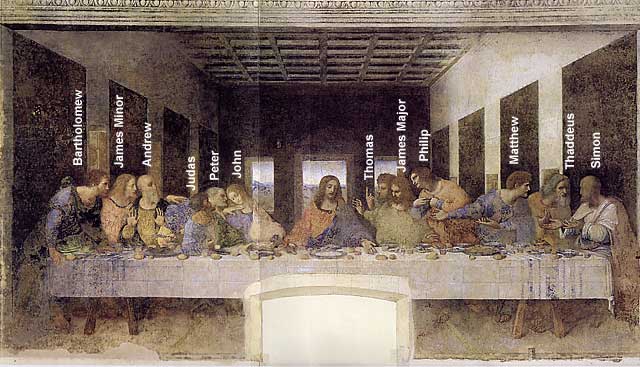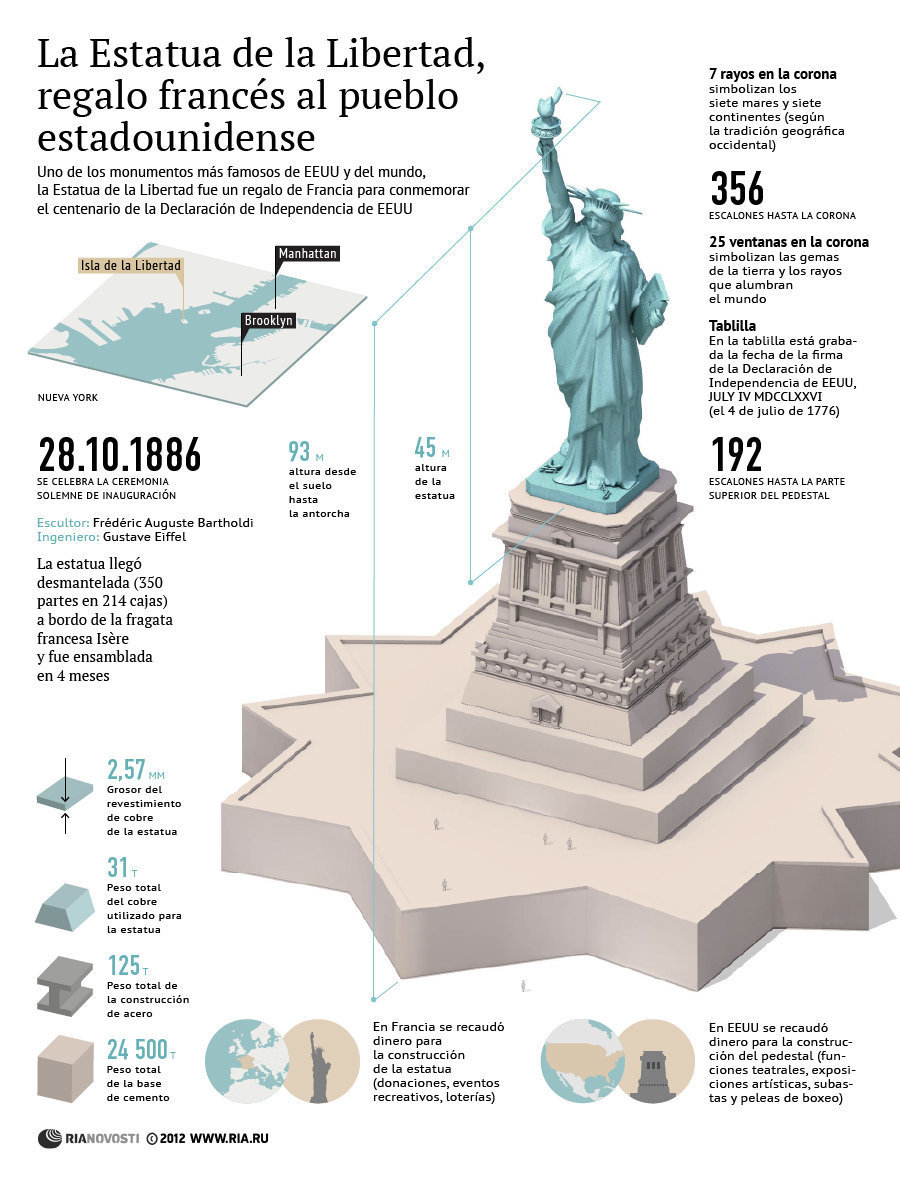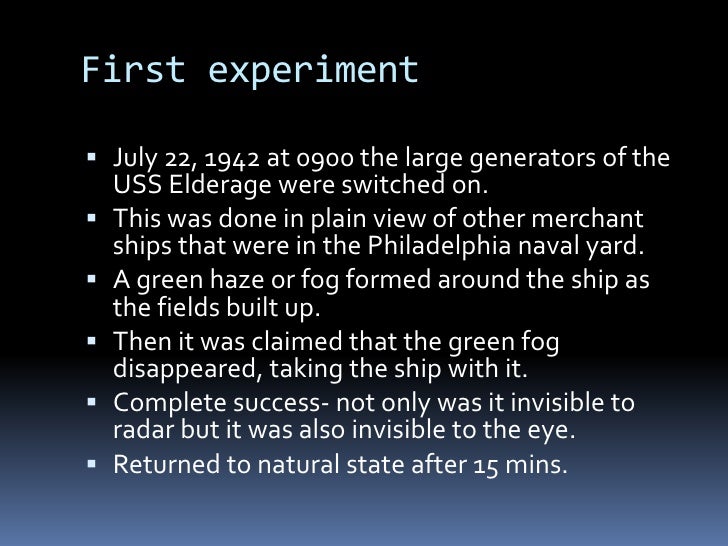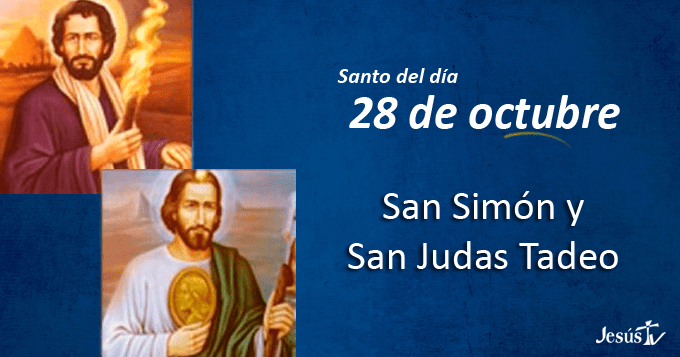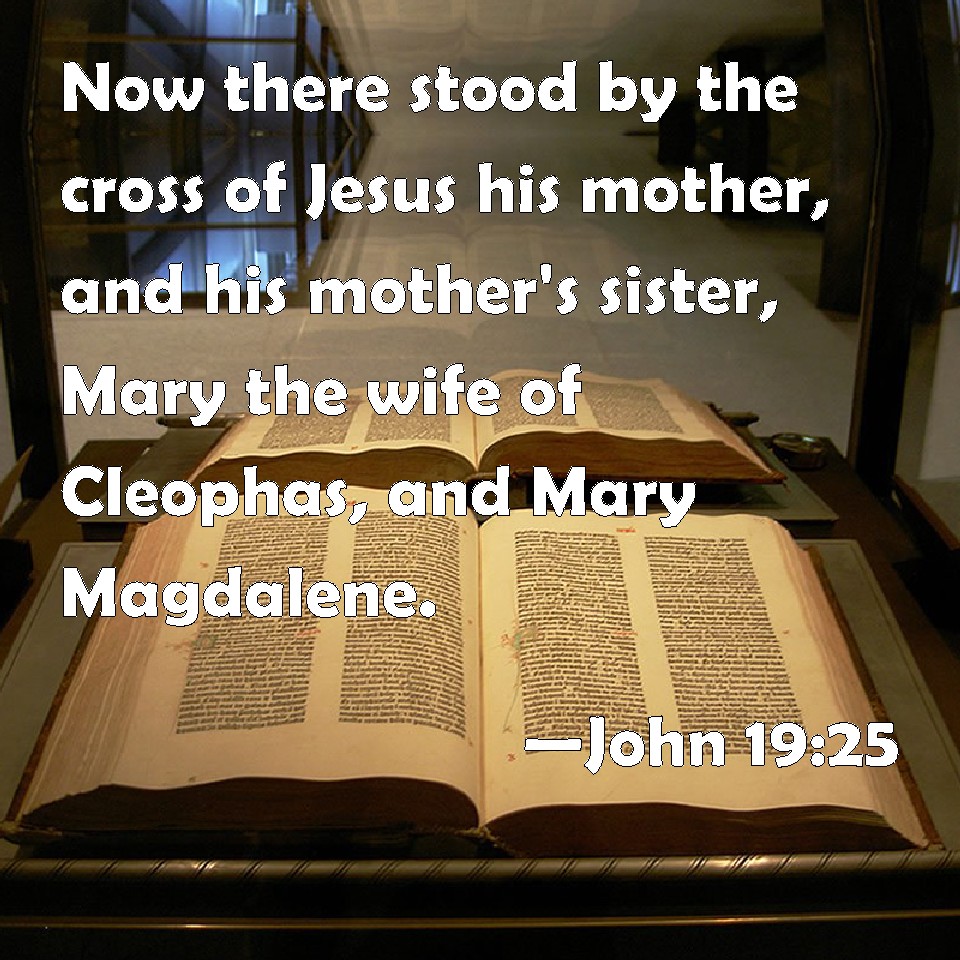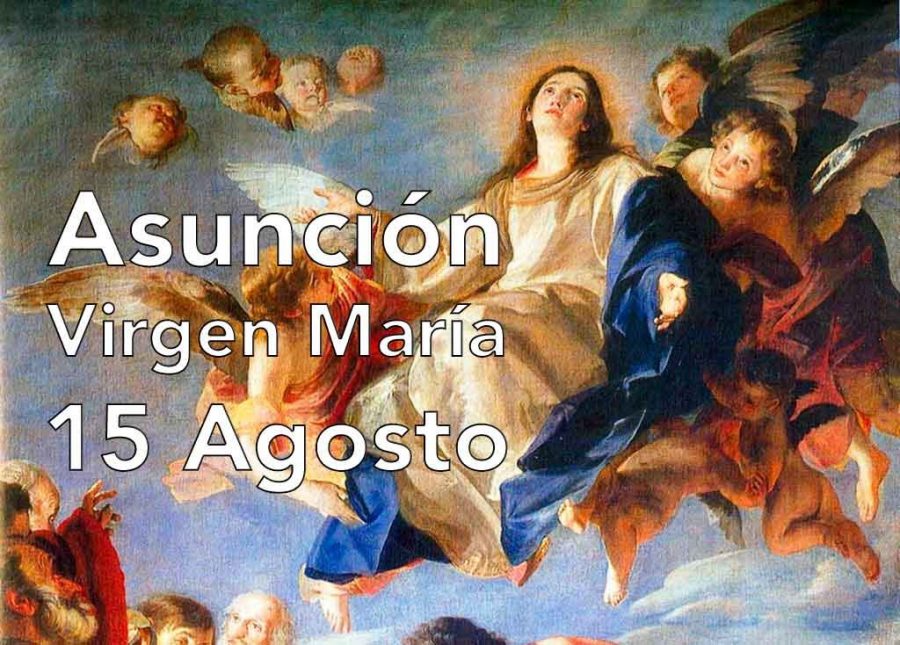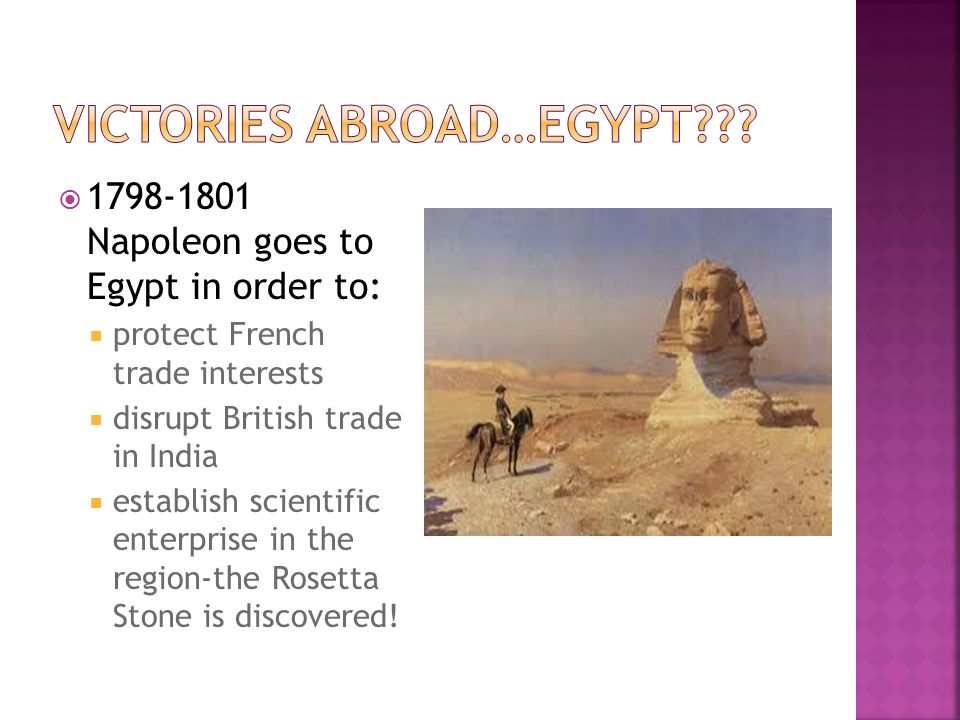|
|
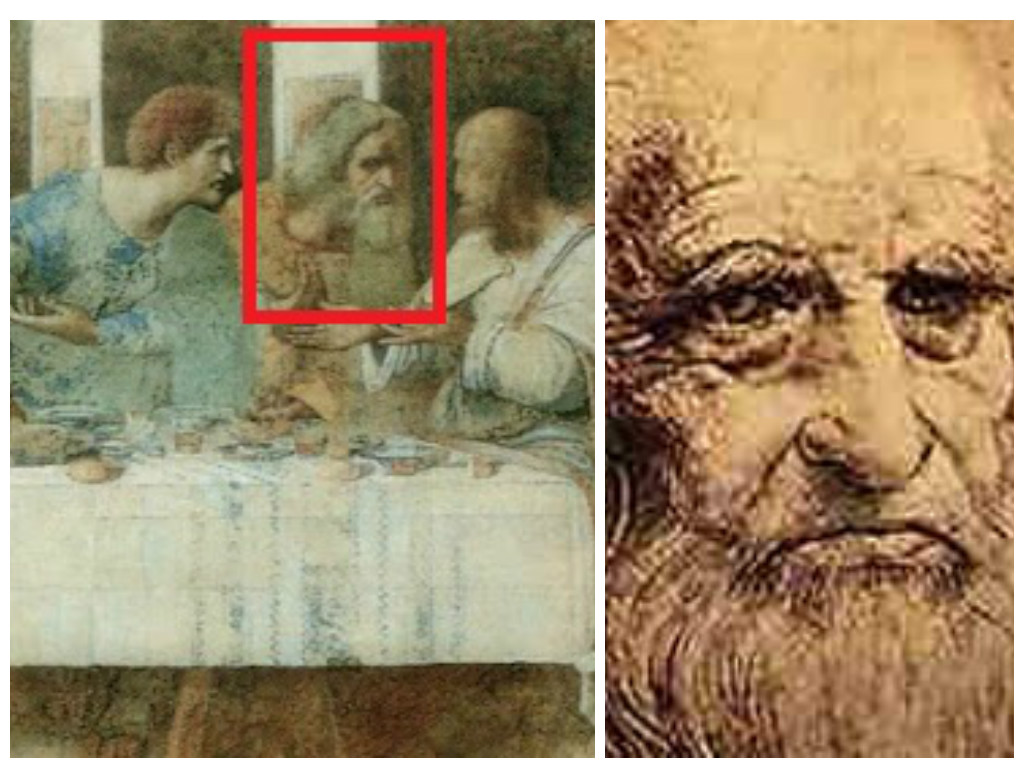 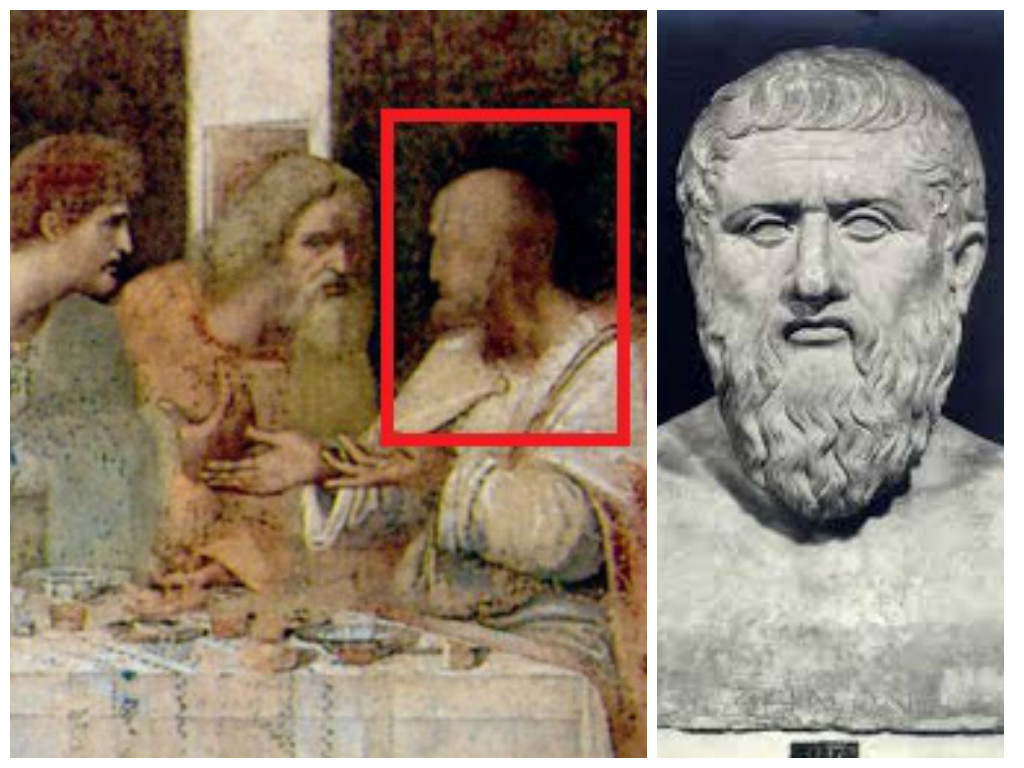
La figura de Judas Tadeo, que en el extremo derecho del cuadro aparece conversando con el mismo Simón el Zelote, estaría basada por su parte en el filósofo Platón, un sabio que debido a sus planteamientos con respecto a la divinidad no era muy querido por la iglesia. Judas Tadeo y Simón el Zelote – o Da Vinci y Platón para algunos- a primera vista aparecen en “La última cena” manteniendo un tranquilo diálogo, ajenos a lo que sucede en la mesa, al revuelo creado, como si ellos estuvieran hablando de cosas más trascendentales e importantes.
|
|
|
|
|
HOLY EQUAL-TO-THE-APOSTLES MARY MAGDALENE
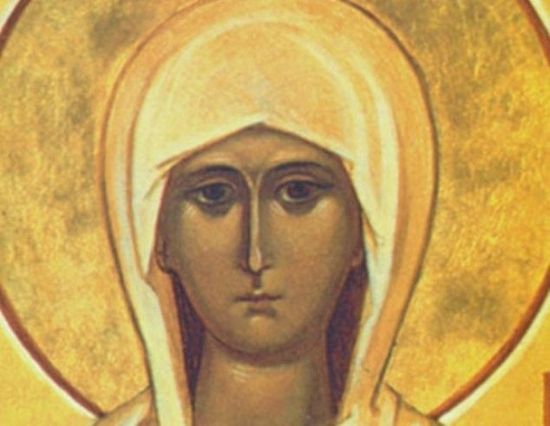
Through His sufferings Christ the Savior redeemed mankind, and opened the gate to the Kingdom of Heaven. During His service he continually preached to all that they follow Him. Those who heard God’s words received them in differing ways, but there were those among them who brought forth fruit in abundance (cf. Mt. 13:8). One of these was the holy equal-to-the-apostles Mary Magdalene. She received that name from the place where she lived, in the town of Magdala. This town belonged to the tribe of Issachar and was located on the western shore of the Sea of Tiberius in Galilee, not far from Capernaum. The naming of a woman for her place of residence shows that she was well-off, because other women’s names were taken, for example, from their family relations: Mary the mother of Jacob, Maria the mother of Cleopas. Luke the Evangelist says that Christ preached the Kingdom of Heaven, and then after Him followed certain women, which had been healed of evil spirits and infirmities, Mary called Magdalene, out of whom went seven devils… and many others, which ministered unto him of their substance (Lk. 8:1–3).
We find the most about Mary Magdalene in the Gospel in passages where the sufferings of Christ the Savior are described, when she showed her dedication and faithfulness to her divine Teacher: Now there stood by the cross of Jesus his mother, and his mother’s sister, Mary the wife of Cleophas, and Mary Magdalene (Jn. 19:25). After the death of the divine Sufferer on the Cross, the centurion on watch believed in the divinity of Christ the Savior. The Evangelist Matthew adds, And many women were there beholding afar off, which followed Jesus from Galilee, ministering unto him: Among which was Mary Magdalene, and Mary the mother of James and Joses, and the mother of Zebedees children (Mt. 27:55–56). Then righteous Joseph of Arimathea asked for the body of the divine Sufferer and buried Him in his own new tomb (Mt. 27–60). As the Evangelist Matthew notes, And there was Mary Magdalene, and the other Mary, sitting over against the sepulcher (Mt. 27:61). The Evangelist Mark says, Mary Magdalene and Mary the mother of Joses beheld where he was laid (Mk. 15:47). Then, when the sabbath was past, Mary Magdalene, and Mary the mother of James, and Salome, had bought sweet spices, that they might come and anoint him (Mk. 16:1). Their worries about the sealed tomb were put to rest all by themselves, when they looked, they saw that the stone was rolled away (Mk. 16:4) and they saw in the tomb a bright angel, who told them the news about the Risen Lord Christ. Then after His resurrection, He appeared first to Mary Magdalene, out of whom he had cast seven devils. And she went and told them that had been with him, as they mourned and wept (Mk. 16:9–10). The Evangelist John the Theologian speaks a little differently and in more detail about the events of those sorrowful days, which would soon become joyful. Mary Magdalene came early, when it was yet dark, unto the sepulchre, and seeth the stone taken away from the sepulcher (Jn. 20:1). She hastened to tell the apostles Peter and John about it, and they in turn hastened to the tomb where they saw the linen clothes lying (Jn. 20:5). Then they returned, but Mary stood without at the sepulchre weeping: and as she wept, she stooped down, and looked into the sepulchre, And seeth two angels in white sitting, the one at the head, and the other at the feet, where the body of Jesus had lain. And they say unto her, Woman, why weepest thou? She saith unto them, Because they have taken away my Lord, and I know not where they have laid him. And when she had thus said, she turned herself back, and saw Jesus standing, and knew not that it was Jesus. Jesus saith unto her, Woman, why weepest thou? whom seekest thou? She, supposing him to be the gardener, saith unto him, Sir, if thou have borne him hence, tell me where thou hast laid him, and I will take him away. Jesus saith unto her, Mary. She turned herself, and saith unto him, Rabboni; which is to say, Master. Jesus saith unto her, Touch me not; for I am not yet ascended to my Father: but go to my brethren, and say unto them, I ascend unto my Father, and your Father; and to my God, and your God. Mary Magdalene came and told the disciples that she had seen the Lord, and that he had spoken these things unto her (Jn. 20:11–18). In the service of the Sunday of the Holy Myrrhbearing Women [the second Sunday after Pascha] we read: “Having come to the tomb seeking the Lord, Mary Magdalene and the other Mary, saw the angel like lightning sitting on the stone, who said to them, ‘Why seek ye the Living among the dead? He has risen as he said. You will find Him in Galilee.”[1]
After the Ascension of the Lord, Mary Magdalene undoubtedly was among certain women (Acts 1:14), who abided in one spirit in prayer with the holy apostles and the Mother of God in the upper room, awaiting the descent of the Holy Spirit. A later traveller describes this place in the holy city of Jerusalem. In the church of Sts. Constantine and Helen, “we were brought … where Christ sat on the stone when He appeared to Maria Magdalene… And the stone, which was the chair, was round, of red rock.”[2] In the church of the Resurrection of Christ “is the stone upon which Christ sat and appeared to Maria Magdalene.”[3]
Church tradition has preserved testimony to her exploits in the capital of the empire. “In Rome, having appeared to the Emperor Tiberius, St. Mary Magdalene brought him a red egg with the words, ‘Christ is Risen!’ Then she told the emperor about the Savior’s sufferings on the Cross. In those days, the presentation of an egg was a sign of joy. From the time of St. Mary Magdalene the trading of eggs on the day of the Resurrection of the Lord amongst Christians became a custom.”[4] This is mentioned in the akathist to the holy Myrrhbearer. In the eleventh ikos we read: “Having reached ancient Rome, courageously didst thou appear before Tiberius Caesar, and with the image of a red egg and wise words thou didst expound to him the life-bearing power of Christ, rebuked deceitful Pilate and the godless high priest, that they will be justly repaid for their lawless deeds… Rejoice, thou who didst not fear Caesar’s wrath; rejoice, thou who didst show him the evil and cunning of Christ’s enemies.”[5] The Church historian Eusebius Pamphilus says that the Roman Emperor Tiberius (14–37) knew from Pilate of the events in Palestine, of the talk about the resurrection of Christ the Savior, “and did not find anything preposterous in Christ’s teachings.”[6] Moreover it is supposed that thanks to Mary Magdalene’s preaching the Roman ruler proposed to the senate that they “include Christ in the pantheon of Roman gods.”[7] The holy Myrrhbearer knew the apostle Paul, whom the Lord had called to preach the Gospel only after His glorious Resurrection, and apparently helped him in his missionary service. Therefore the apostle Paul at the end of his epistle to the Romans writes, Greet Mary, who bestowed much labour on us (Rom. 16:6).
Later Mary Magdalene came to Ephesus, where St. John the Theologian who, as opposed to the other Evangelists, wrote the fourth Gospel significantly later; in it is spoken in detail about the resurrection of Christ the Savior and His appearance to Mary Magdalene. Mary Magdalene reposed in the Lord in Ephesus. St. Dimitry of Rostov (†1709; commemorated October 28), says that she “was laid to rest at the entrance to the cave in which the seven youths of Ephesus would later fall asleep.”[8] In examining the Western version of St. Mary Magdalene’s relics in Provence, Archbishop Sergius (Spassky) notes that “according to the Life of St. Willibald (comm. July 7), bishop of Eichstadt, who travelled to the East in the eighth century, her grave was shown in 745 in Ephesus.”[9] Later her holy relics were translated to Constantinople during the reign of Emperor Leo VI the Philosopher (886–912).[10] Meanwhile Igumen Daniel, who travelled from Kievan Rus’ to the Holy Land at the beginning of the eleventh century, during the heat of the crusades, visited also Ephesus. He wrote, “And here, near that cave where the seven sleeping youths of Ephesus lie, are … also the grave of Magdalene Mary and her head.”[11] And an anonymous Russian traveller who visited Constantinople in the late thirteenth century–early fourth century, that is, after the fall of the Latin empire, describes the holy site in the capital city monastery of Righteous Lazarus: “St. Lazarus the friend of God is sealed in the right column, and his sister Martha lies at his left hand; here … in the left column Mary Magdalene is enclosed.”[12] Later travellers who visited this monastery say nothing about the relics of St. Mary Magdalene.[13]
<…>
The fate of the holy Myrrhbearer’s relics is interesting. Apparently, “during the crusades they were taken to Rome and placed under the altar of the Lateran Cathedral. A part of the relics of St. Mary Magdalene are in France, near Marseille. Particles of her holy relics are preserved in the monasteries of Mt. Athos and Jerusalem.”[14] Many relics of ancient saints, as a consequence of the shameful Fourth Crusade—when in 1204 Constantinople was seized and plundered—ended up in the West. Behind this is the peculiar piety of the Western crusaders. It is worth noting that before and after there were also cases when due to various circumstances the relics of various saints ended up in the West; for example, those of St. Nicholas. An unknown traveller from Suzdal, who went with Metropolitan Isidore in 1438 from Moscow to Italy to the Uniate Council, says of the holy shrines of Venice: “There St. Marko himself lies; and there are many relics of saints, taken from Tsargrad [Constantinople].”[15] Now, centuries later, we can see a special providence in this, because the saints’ relics would have perished from the Turks at the fall of Byzantium.:[16] But during following years the Western Church itself experienced a schism—Protestantism arose, which rejects the veneration of holy relics and icons. Incidentally, the veneration of specific saints in different regions has been preserved and bears a particularly solemn character; for example, in the southern Italian city of Bari they solemnly honor St. Nicholas on May 9: Wearing costumes from the ninth century they carry an ancient sculpture of him through the town, and so forth. In “The Travels of Avraamy of Suzdal to the eighth council with Metropolitan Isidore”, a mystery play is described that was enacted in the Ascension Church of Florence on the very feast of the Ascension. The Mother of God and St. Mary Magdalene were the only female persons named in the play.
Bishop Sergius (Spassky) notes the opinion in Western patristic historiography that equates Mary Magdalene with the sinful woman who washed the feet of Jesus Christ in the house of Simon the Pharisee (Lk. 7:38), as well as the identification of Mary Magdalene with Mary the sister of righteous Lazarus. The Eastern fathers differentiate between them.[17] This is quite an important differentiation in the veneration of the holy Myrrhbearers, because behind it is a different understanding of her life’s path and podvig. Western tradition considers that equal-to-the-apostles Mary Magdalene, after her preaching in Rome, labored in the south of France and Provence, and along with her righteous Martha, Lazarus, and St. Maximinus preached the Gospel. Therefore St. Mary Magdalene is honored as the enlightener of Marseille, who converted its inhabitants to Christianity. The cave, which is preserved in the area of La Sainte Baume, where the holy Myrrhbearer spent time in solitude, later became a place of pious pilgrimage and worship.[18]
In the church of the holy equal-to-the-apostles Mary Magdalene in Saint Maximinus, in the center of the northern part of the basilica there is an entrance to the crypt where the relics of Christ’s disciple were uncovered in 1279.[19] It was discovered that from out of the righteous woman’s mouth a plant was sprouting. Theological thought explained this as a testimony to her special mission: She was an “Apostle to the Apostles”, because it was she who announced the glad tidings of the Resurrection of Christ the Savior to the Apostles.[20] The initiator of the uncovering of the holy relics of Christ’s disciple was Prince Charles of Anjou († 1309), the heir to the duke of Provence. From that time on, Mary Magdalene became the protectress of the Anjou dynasty and of Provence, and her veneration took on a particular, imperial character.[21] A basilica was built over her relics. Here the holy Myrrhbearer is especially honored, and on July 22 according to the Gregorian calendar there are solemnities in the city.
It is important to note the opinion of one Western researcher who “came to the conclusion that the cult of Mary Magdalene arose in Provence no earlier than the mid-eleventh century,”[22] and services to her began in the West “only in the eleventh or twelfth centuries.”[23] They began to write Lives of the holy equal-to-the-apostles Mary Magdalene afterwards: the heremetic edition, the apostolic edition, and then both editions were combined into one. Later her Life was entered into Western hagiographic and homiletic compilations. The co-ascetics and continuers of the labors of St. John Cassian the Roman (†435; comm. February 29) aided in the spread of St. Mary Magdalene’s veneration in Europe.[24]
Because in the West the myrrhbearer was equated with the sinful woman who washed the feet of the Savior with her tears (Lk. 7:38), and the seven devils that tormented her were considered to be “retribution for her sins”,[25] the sermons of the Western clergy glorified St. Mary Magdalene as an example of true repentance.[26] The Eastern tradition, however, considers that these were two different women and that the works of God (Jn. 9:3) were made manifest on her. “Mary Magdalene was possessed by demons not due to her sins or the sins of her parents, but rather it was allowed by God’s Providence in order that the Lord Jesus Christ might show the works of God’s glory, and manifest the great miracle of the healing of Mary Magdalene, the enlightenment of her mind, drawing her to faith in Christ the Savior and to eternal salvation.”[27] Her veneration in the West was multi-faceted. Mary Magdalene’s care for Christ inspired the faithful to good deeds in her name.” Therefore in the Middle Ages guesthouses for travellers appeared that were “under the patronage of St. Mary Magdalene,[28] as well as hospitals and leper colonies. Monasteries were founded in her name, and in fact “monasteries named for St. Mary Magdalene were only outnumbered by those named after the Virgin Mary, which testifies to the great veneration for this saint.”[29] She is also the patron saint of craftsmen of various specializations.[30]
<...>
During life of her Divine Teacher she stood out for her faithfulness and dedication to Him. The later translation of her relics enabled the spread of her veneration in the world. Now, prayers are raised up to her in various countries and Churches. Her name and labors witness to the resurrection Christ the Savior. <...> One preacher said of her: “What a magnificent image of grateful love for the Lord is the holy equal-to-the-apostles Mary Magdalene! And thou, O Christian soul, should like her be penetrated with the same strong and unchanging feeling for the Lord Jesus. By His redeeming service you also are freed in the Sacrament of Baptism, like Magdalene, from the power of the evil, cunning spirits that have nested in you and have had access to people since the time of our forefather’s sin.”[31]
https://orthochristian.com/122857.html |
|
|
|
|
CLEOPHAS/LEO/LEONARDO DA VINCI/LEON DE LA TRIBU DE JUDA/DAVID
C=LUNA CRECIENTE
|
|
|
|
|
1. 1965: Gateway Arch in St. Louis completed
The tallest monument in the United States was completed on this date in 1965. The Gateway Arch stands 630 feet tall and is the focal point of the St. Louis skyline. Constructed out of concrete and stainless steel, the arch has a tram system built within it that will take visitors to the very top where they have an amazing view of the city. The arch was built for two main reasons, first was to create jobs, but maybe more importantly to commemorate the Westward Expansion of the United States. According to reports, the cost of the project was estimated to be around $13 million which in today’s money would be around $190 million. The arch has more than 4 million visitors each year and is an important part of the city’s economy.
2. 1886: Dedication of the Statue of Liberty
The last rivet was fitted which completed the installation of the Statue of Liberty on this date in 1886. President Grover Cleveland was on hand to perform the dedication ceremony as well as numerous American and French dignitaries. Lady Liberty was a gift from the people of France to the people of the United States to commemorate their friendship during the American Revolution. The 151-foot tall statue was originally built in Paris then disassembled and shipped to the U.S. in an estimated 200 different crates. The steel framework was designed by Alexandre-Gustave Eiffel, who made a name for himself by designing the Eiffel Tower. But the overall design was done by French sculptor Frederic-Auguste Bartholdi.
3. 1922: First college football game broadcast nationwide on the radio
It was on this date in 1922 the first college football game was broadcast nationwide on the radio. The Princeton Tigers went up against the Chicago Maroons at Stagg Field in Chicago. The Maroons were heavily favored and were one of the most dominant teams in the Big Ten conference. Unfortunately, the broadcast wasn’t live during the game; that didn’t happen until two years later in 1924. What would normally happen was a reporter would sit in the press box at the stadium and would phone the details of what was happening back to the station. An announcer would be standing by to re-enact the play by play using the help of sound effects and sometimes an in-studio audience. Even though Princeton was the underdog, they managed to pull off a major upset and then went on to finish the season with an undefeated record.
https://historythings.com/day-october-28th/ |
|
|
|
|
St Mary Magdalene Church, Sandringham, Norfolk (photo)
https://www.bridgemanimages.com/en/neil-holmes/st-mary-magdalene-church-sandringham-norfolk-photo/photograph/asset/809218
|
|
|
|
|
New International Version
7 Therefore Jesus said again, “Very truly I tell you, I am the gate for the sheep. 8 All who have come before me are thieves and robbers, but the sheep have not listened to them. 9 I am the gate; whoever enters through me will be saved. They will come in and go out, and find pasture.
Read full chapter
|
|
|
|
|
Project Rainbow: What really happened in the Philadelphia experiment?
Aman named Al Bielek, who claimed to be a test subject of various secret U.S. Military Experiments, said that on August 12, 1943, the U.S. Navy carried out an experiment called the “Philadelphia Experiment” on the USS Eldridge, at the Philadelphia Naval Shipyard, after installing special equipment on it. In this test, they allegedly send the ship and all its crew members 10 minutes back in time, making it apparently ‘invisible’, and then bring them back to the present time.
MRU
As a consequence, many of the sailors onboard went insane, many lost their memory, some were engulfed in flames to their deaths, and others molecularly bonded with the ship’s metal structure. However, according to Bielek, he and his brother, who were aboard the experiment ship at the time, jumped off just before the time warp opened and survived without any injuries. There’s a huge argument as to whether this event is true or not. But if such an experiment really happened then it’s undoubtedly one of the eeriest mysteries in human history.
The Philadelphia Experiment: Project Rainbow
MRU CC
According to Al Bielek, August 12, 2003, is an extremely important anniversary date in the U.S. Navy’s secret World War II invisibility project known as the Philadelphia Experiment. Bielek claimed that ― on August 12, 1943 ― the Navy, after installing special equipment on the USS Eldridge, made the ship and its crew disappear from Philadelphia harbour for over 4 hours.
The exact nature of this test is open to speculation. Possible tests include experiments in magnetic invisibility, radar invisibility, optical invisibility or degaussing ― rendering the ship immune to magnetic mines. The tests were conducted, only to produce undesirable results. Afterwards, the project — supposedly called “Project Rainbow” — was cancelled.
What Really Happened During The Philadelphia Experiment?
Two separate sets of bizarre events make up the “Philadelphia Experiment.” Both revolve around a Navy Destroyer escort, the USS Eldridge, with the events taking place on two separate days in the summer and fall of 1943.
In the first experiment, an alleged method of electrical field manipulation allowed the USS Eldridge to be rendered invisible on July 22, 1943, in the Philadelphia Naval Shipyard. The second rumoured experiment was the teleportation and small-scale time travel (with the ship sent a few seconds in the past) of the USS Eldridge from the Philadelphia Naval Shipyard to Norfolk, Virginia, on October 28, 1943.
Horrible tales of mangled seamen and sailors stuck within the metal of the USS Eldridge often accompany this experiment, with the USS Eldrige reappearing seconds later in the waters around Philadelphia. Recitation of the events surrounding the second Philadelphia Experiment often includes a cargo and troop transport vessel, the SS Andrew Furuseth. The lore of the second experiment claims those on board the Andrew Furuseth viewed the USS Eldridge and it’s crew as they teleported into Norfolk momentarily before the ship returned to the waters of Philadelphia.
Prior to the mid-1950s, no rumours of bizarre activity surrounded any teleportation or invisibility experiments in North America during the 1940s, let alone in the area surrounding Philadelphia.
Carl Meredith Allen, using the alias Carlos Miguel Allende, sent a series of letters to the astronomer and writer Morris K. Jessup. Jessup authored several early UFO books including the mildly successful The Case For The UFO. Allen claimed to be on the SS Andrew Furuseth during the second experiment, witnessing the USS Eldridge emerge in the waters of Norfolk and quickly disappear into thin air.
Carl Allen supplied no proof to verify what he claimed to witness on October 28, 1943. He did win the mind of Morris Jessup, who began to champion Allen’s view of the Philadelphia Experiment. Jessup, however, died four years after his first contact with Allen from an apparent suicide.
Moving a ship weighing several thousand tons leaves an inevitable paper trail. On the date of the Philadelphia “Invisibility” Experiment, July 22, 1943, the USS Eldridge had yet to be commissioned. The USS Eldridge spent the day of the alleged teleportation experiments, October 28, 1943, safely within a New York harbour, waiting to escort a naval convoy to Casablanca. The SS Andrew Norfolk spent October 28, 1943, sailing across the Atlantic Ocean en route to the Mediterranean port city of Oran, further discrediting Carl Allen’s comments.
And in the early 1940s, the Navy did conduct experiments to make naval vessels “invisible” in the Philadelphia Naval Shipyards, but in a different manner and with a completely different set of desired results.
In these experiments, researchers ran an electric current through hundreds of meters of electrical cable around the hull of a ship to see if they could make the ships “invisible” to underwater and surface mines. Germany deployed magnetic mines in naval theatres — mines that would latch on to the metal hull of ships as they came near. In theory, this system would make the ships invisible to the magnetic properties of the mines.
Seventy years later, we are left without a shred of credible evidence for the Philadelphia Experiment(s), yet rumours persist. If you are still unconvinced, think of the situation from a different viewpoint. No incident, regardless of the horrific nature, would stall the development of teleportation technology if the military believed it feasible. Such a resource would be an invaluable front line weapon in war and the backbone of many commercial industries, yet decades later, teleportation is still caged within the realm of science fiction.
In 1951, the United States transferred the Eldrige to the country of Greece. Greece christened the ship the HS Leon, using the vessel for joint U.S. operations during the Cold War. The USS Eldridge met an unceremonious end, with the decommissioned ship sold to a Grecian firm as scrap after five decades of service.
In 1999, fifteen members of the USS Eldridge crew held a reunion in Atlantic City, with the veterans bemoaning the decades of questioning surrounding the vessel they served on.
https://mru.ink/the-philadelphia-experiment/ |
|
|
|
|
El despertador de bronce colocado en el salpicadero del DeLorean por Doc.
- Los relojes eran el objeto de colección favorito de Doc Brown. Tenía de todo, desde relojes de cuco hasta modelos digitales, y todos estaban en perfecta sincronía con los demás. La presencia de tantos relojes no era casual. El tiempo era el último, y quizás el último, interés dominante de Doc Brown .
- —De Regreso al futuro de George Gipe (cita, página 26)
- Él [ Marty ] estaba a medio camino del banco de trabajo donde Doc guardaba su equipo de video cuando una cacofonía repentina lo sobresaltó a su pesar. Ajustados con precisión, todos los relojes con forma de anunciar la hora sonaron a la vez: campanadas musicales, sonidos de cuco, pitidos digitales. Durante diez segundos, Marty se quedó quieto, escuchando hasta que se apagó el último presagio de la hora. Una sonrisa se dibujó en su rostro, pues nunca se cansaba de escuchar esta extraña sinfonía arreglada y orquestada por el cronometrador más fanático del mundo, Doc Brown. / "Debe ser la una", dijo Marty en voz baja. Y en efecto, lo era .
- —De Regreso al futuro de George Gipe (cita, páginas 44 y 45)
- " Tenemos unos diez minutos de espera", dijo Marty, mirando el reloj del pasillo [de la preparatoria Hill Valley ] . / "Diez segundos de retraso", murmuró Brown, comparándolo con su reloj de bolsillo. "Uno pensaría que una escuela pública al menos tendría la hora correcta" .
- —De Regreso al futuro de George Gipe (cita, página 141)
Los relojes fueron el foco principal de los estudios del Dr. Emmett Brown sobre viajes en el tiempo y física.
Apariciones notables
Doc tenía casi treinta relojes sincronizados en su residencia en 1985. Debido a un experimento de retardo , todos menos uno se atrasaron 25 minutos. [ 1 ] Doc también usó dos cronómetros sincronizados con pantalla LED durante el primer desplazamiento temporal del mundo . Estos estaban configurados para mostrar solo la hora y los minutos, en lugar de funcionar como cronómetro. [ 2 ] Doc conservó un cronómetro mientras que el otro colgaba del cuello de Einstein. Si bien los dos relojes estaban completamente sincronizados antes del viaje, el reloj de Einstein se atrasó exactamente un minuto después.
El reloj del Palacio de Justicia de Hill Valley se convirtió en la clave para el regreso de Marty a 1985, porque registraba la hora y el lugar en el que caería un rayo, así como la fuente de energía suficiente para alimentar los circuitos del tiempo de la máquina del tiempo DeLorean hasta 1985 después de ser alcanzado por un rayo .
La fascinación de Doc por los relojes lo llevó, indirectamente, a descubrir cómo viajar en el tiempo. Como le contó Doc a Marty en 1985, estaba "de pie en el borde del inodoro, colgando un reloj" cuando resbaló y se golpeó la cabeza, despertando con una visión del condensador de flujo .
Marty llevaba un reloj de pulsera digital que nunca parecía funcionar, [ 3 ] aunque la alarma sonó en el Café de Lou . [ 4 ]
Doc colocó un despertador de latón en el tablero del DeLorean, que programó para que sonara cuando Marty llegara la hora de conducir hacia el rayo de la torre del reloj. En 1955, Doc llevaba tres relojes: uno en el dorso de la muñeca izquierda, otro en la parte delantera de la derecha y un reloj de bolsillo. En 1885 , Doc llevaba un reloj de bolsillo que Buford le pidió prestado para contar el tiempo que le tomaría a Marty para su duelo.
Los circuitos horarios del DeLorean tenían un reloj incorporado que registraba la hora local visitada y se ajustaba a cualquier nuevo período de tiempo ingresado.
Un reloj de cuco era parte de la máquina de desayuno automatizada de Doc en 1885, que comenzó a preparar el desayuno todas las mañanas a las 7:00 a. m.
reloj de 10 horas
En la secuencia inicial con los relojes, justo cuando aparece Christopher Lloyd en los créditos , al final del nombre aparece un reloj de 10 horas al fondo. Reaparece a la vista cuando se muestra " El Poder del Amor ", interpretada por Huey Lewis y The News . Este sistema de sincronización se utilizó oficialmente en Francia desde 1794 durante poco más de seis meses. Este reloj en particular tiene una característica única: funciona en sentido contrario a las agujas del reloj. Internet no permite encontrar ningún otro aparato similar.
Sin embargo, el reloj muestra la hora equivocada. Las 7:53 am hora estándar son las 3:28:48 hora decimal francesa, basada en el reloj de 10 horas al día; el reloj decimal muestra las 7:85 hora decimal (la manecilla de la hora está unos minutos adelantada), que son las 18:50:24 o 6:50:24 pm hora estándar.
Entre bastidores
Tema
Uno de los temas recurrentes en Regreso al Futuro era el avance de los relojes, ya fuera por el avance del minutero en un reloj analógico, el cambio de número en un reloj digital o el sonido de una campana o alarma al llegar la hora. Cuando se mostraba un reloj en la película, era probable que la hora cambiara pronto:
- El reloj de la radio en el dormitorio de Marty pasó de las 12:27 am a las 12:28 am un momento antes de que sonara el teléfono.
- El reloj en el centro comercial Twin Pines cambió de la 1:15 a. m. a la 1:16 a. m. cuando llegó Marty.
- Los cronómetros LED de Doc y Einstein avanzaron de 1:18 a 1:19 para demostrar que estaban sincronizados. Después del Experimento Temporal n.º 1 , Doc mostró su cronómetro avanzando de 1:21 a. m. a 1:22 a. m., mientras que el de Einstein seguía funcionando y con un minuto de retraso.
- El reloj del Palacio de Justicia de Hill Valley sonó a las 8:30 am cuando Marty entró en la ciudad.
- La campana del reloj del juzgado sonó a las 10:00 p. m., ahogando lo que Marty le estaba diciendo a Doc.
- El reloj del juzgado avanzó de 10:02 a 10:03 mientras Doc observaba.
- El minutero del reloj del juzgado avanzó de las 22:03 a las 22:04, un momento antes de que cayera el rayo.
- El reloj del Bank of America avanzó de la 1:23 am a la 1:24 am cuando Marty regresó a 1985.
- El reloj de la radio en el dormitorio de Marty adelantó de las 10:27 am a las 10:28 am, lo que provocó que la radio se encendiera.
- En un tema inverso, se puede ver a Marty moviendo los minutos hacia atrás en la hora de destino del DeLorean, de 1:35 am a 1:24 am.
- Como excepción a la temática, la cámara se centra en el despertador del dormitorio de George cuando Marty lo asusta para que invite a Lorraine a salir. Son las 1:22, pero nunca vemos que el reloj avance al minuto siguiente.
Rodaje
- Mientras filmaba la secuencia de apertura de Regreso al futuro con todos los relojes en el laboratorio del Doc Brown, el director Robert Zemeckis bromeó: "¡Espero que no piensen que es una película sobre relojes!" [ 5 ]
- Como señala Robert Gale en el comentario del DVD, la vista inicial de los relojes es uno de los varios homenajes a la película de 1960 La máquina del tiempo . Otras referencias se encuentran en los ruidos simultáneos de los relojes al dar las 8:00 (a. m. en Regreso al futuro , p. m. en La máquina del tiempo ) y los colores rojo, amarillo y verde de la pantalla del DeLorean.
- Hubo un error de continuidad en una escena de Regreso al Futuro, que se reutilizó en Regreso al Futuro II . Cuando Doc regresa del futuro a buscar a Marty, el despertador de latón falta en el tablero del DeLorean durante la toma rápida del coche chocando contra unos cubos de basura. El reloj permanece allí durante el resto de la escena y en todas las demás apariciones del tablero del DeLorean en las partes II y III .
https://backtothefuture.fandom.com/wiki/Clock
|
|
|
|
|
| Stargate |

Theatrical release poster
|
| Directed by |
Roland Emmerich |
| Written by |
|
| Produced by |
|
| Starring |
|
| Cinematography |
Karl Walter Lindenlaub |
| Edited by |
- Michael J. Duthie
- Derek Brechin
|
| Music by |
David Arnold |
Production
companies |
|
| Distributed by |
|
| Release date |
- October 28, 1994 (United States)[1]
|
| Running time |
121 minutes[2] |
| Countries |
|
| Language |
English[2] |
| Budget |
$55 million[5] |
| Box office |
$196.6 million[5][6] |
https://en.wikipedia.org/wiki/Stargate_(film) |
|
|
 Primer Primer
 Anterior
226 a 240 de 240
Siguiente Anterior
226 a 240 de 240
Siguiente
 Último
Último

|






